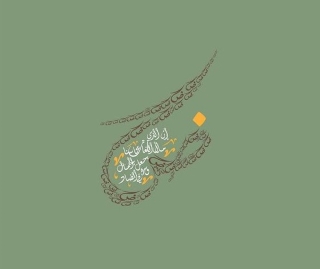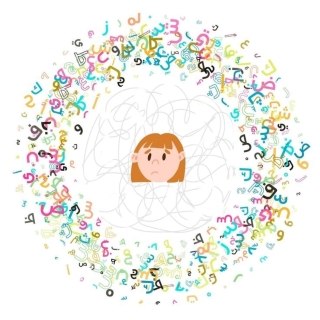5 Basic Grammar Rules for Beginners in Arabic.

5 Basic Grammar Rules for Beginners in Arabic.
When learning Arabic, it is essential to have a solid grammatical foundation. Grammar rules are the basis on which sentence structure and idea organization are built, making it easier for you to express yourself clearly and accurately. In this article, we present five essential grammar rules for beginners that will enable you to work with Arabic sentences in a proper and understandable way.
1. Nominal and Verbal Sentences
The Arabic language contains two basic types of sentences: the nominal sentence and the verbal sentence.
Nominal Sentence: This is a sentence that begins with a noun and is usually used to express a state or description. Example: "The sky is clear." In this sentence, "the sky" is the noun that starts the sentence, and "clear" is the adjective that describes the state.
Verbal Sentence: This is a sentence that begins with a verb, focusing on an action that took place. Example: "Mohammad went to school." In this sentence, "went" is the verb indicating the action, and "Mohammad" is the subject who performed the action.
In a verbal sentence, the verb typically comes first, followed by the subject.
Tip: It is important to understand the difference between these two types, as the use of each determines the structure of the sentence. If you wish to describe a state or give a description, use the nominal sentence. If you wish to focus on a specific event, use the verbal sentence.
2. Singular, Dual, and Plural
In Arabic, nouns are inflected based on the number of people or things they refer to. Here’s the difference between the singular, dual, and plural:
Singular: This refers to one person or thing. Example: "Book" is a singular noun referring to one book.
Dual: This refers to exactly two persons or things. The dual is formed by adding "ān" or "ayn" to the word. Example: "Two books" (كتابان).
Plural: This refers to more than two persons or things. Example: "Books" is the plural form of "Book". There are different types of plural, such as broken plural, masculine regular plural, and feminine regular plural.
Tip: You should learn how to inflect verbs and pronouns according to the singular, dual, and plural forms, as Arabic requires agreement between nouns, verbs, and pronouns in these cases.
Note: The singular, dual, and plural forms have different uses in sentences, so learning the difference will help you form correct and precise sentences.
3. Pronouns
Pronouns are words used to refer to people or things without having to mention their full names. In Arabic, there are two types of pronouns:
Attached Pronouns: These pronouns are attached to the word (either the verb or noun). Examples:
- In the sentence "We went to school," the pronoun "نا" (na) is the first-person pronoun (subject).
- In the sentence "His book is on the table," the pronoun "ه" (h) is the third-person possessive pronoun.
Detached Pronouns: These pronouns are separate from the word. Examples:
- In the sentence "I am Mohammad," "I" is the first-person pronoun.
- In the sentence "You are a teacher," "You" is the second-person pronoun.
- In the sentence "He is handsome," "He" is the third-person pronoun.
Tip: Understanding pronouns and using them correctly helps identify the subject and object in a sentence, which adds clarity to the meaning.
4. Prepositional Phrases
Prepositional phrases are used to clarify a relationship between elements in a sentence, such as possession, location, or time. Prepositions like "in," "from," "to," and "about" are used to govern the noun that follows them.
Examples:
- "The pen is in the school": In this sentence, "school" is in the genitive case because of the preposition "in," indicating the pen's location.
Tip: Prepositions are an essential part of building sentences in Arabic, and understanding how they affect sentence structure will help you express possession, location, time, and more. Make sure to learn prepositions and their uses well.
5. Definite Noun
In Arabic, we use the definite article "ال" to make a noun definite. A definite noun refers to something specific and known to both the speaker and the listener.
Examples:
- "The book" with "ال" refers to a specific book known to both the speaker and listener.
- "Book" without "ال" refers to any book in general.
Tip: Learn when to use "ال" to specify known or definite things. Using "ال" reduces ambiguity and makes the meaning more precise. Adding "ال" to a noun makes the meaning more specific.
Mastering grammatical rules will help you express yourself correctly in Arabic. By learning nominal and verbal sentences, singular, dual, and plural forms, pronouns, prepositional phrases, and definite nouns, you will be able to construct sentences easily and correctly. Continuous practice is the key to language learning, so try applying these rules daily to improve your skills.
 The Arabic Language
The Arabic Language The Dhad Language
The Dhad Language Dialects and Modern Standard A...
Dialects and Modern Standard A... How to Start Your Journey in L...
How to Start Your Journey in L... The Best Ways to Learn Vocabul...
The Best Ways to Learn Vocabul... Learn Arabic Effectively: The...
Learn Arabic Effectively: The... Learn Arabic Easily with the B...
Learn Arabic Easily with the B... Overcome the difficulty of wri...
Overcome the difficulty of wri... Arabic Proficiency Test: An In...
Arabic Proficiency Test: An In... From Beginner to Fluent: Maste...
From Beginner to Fluent: Maste... 25 Essential Phrases You Need...
25 Essential Phrases You Need... One Tool, Amazing Results: Lea...
One Tool, Amazing Results: Lea... ake Social Media a Learning To...
ake Social Media a Learning To... How to Transition Easily Betwe...
How to Transition Easily Betwe... Discover How to Determine Your...
Discover How to Determine Your...